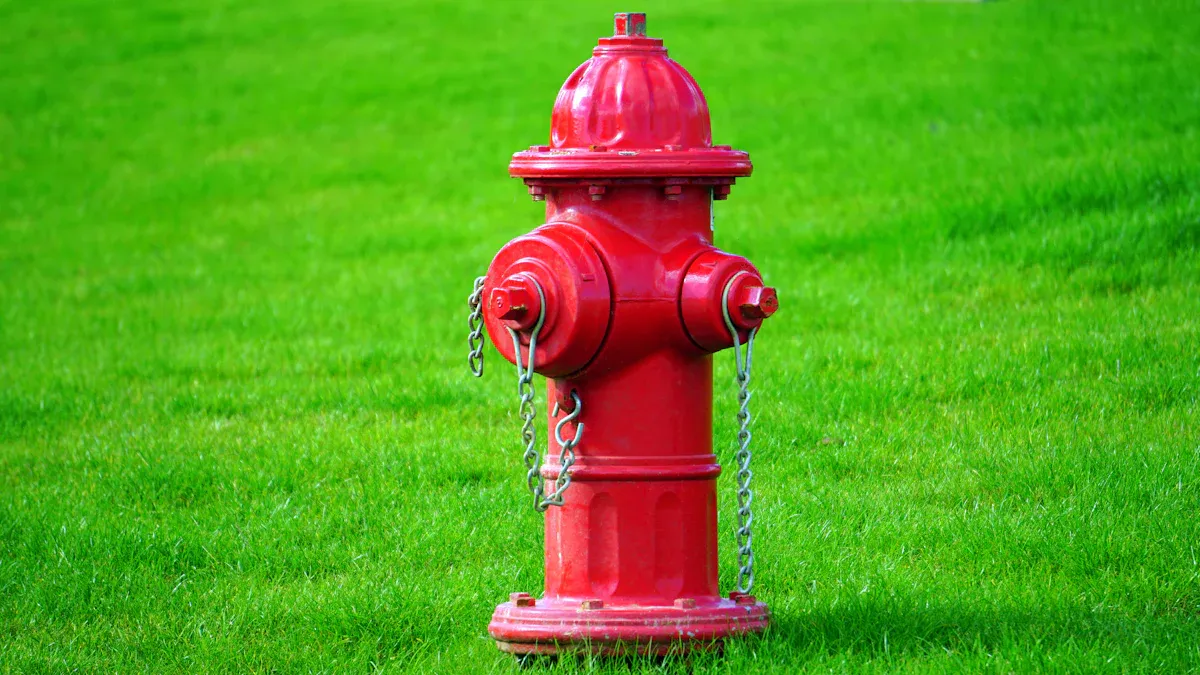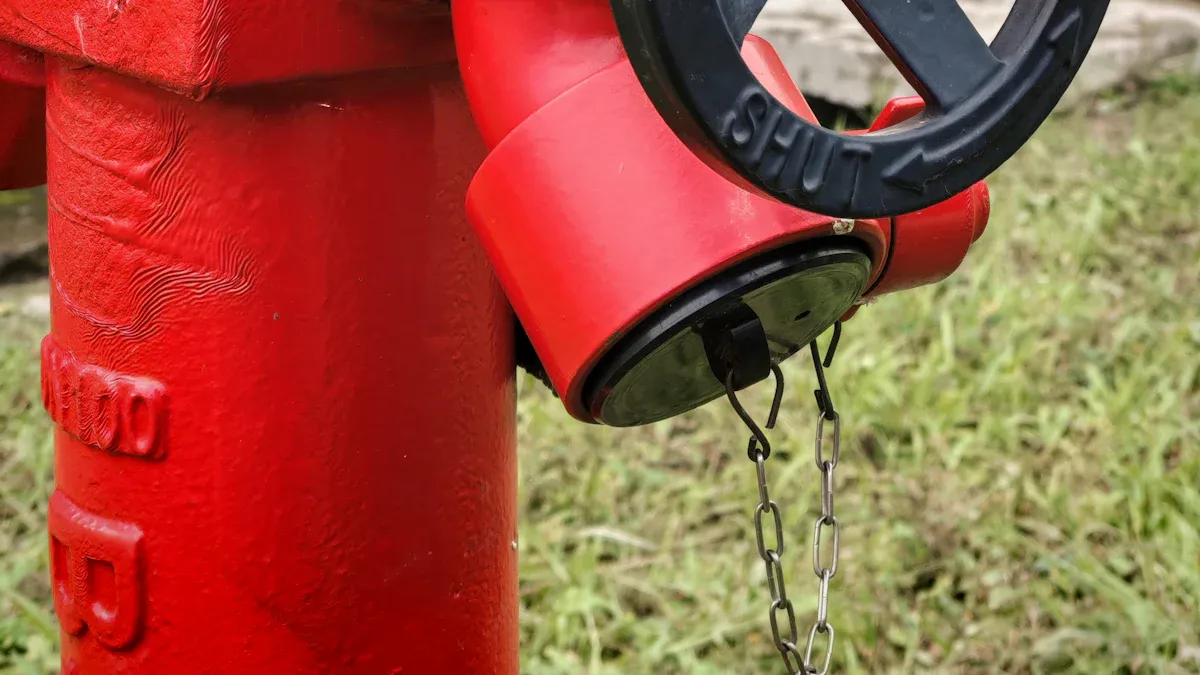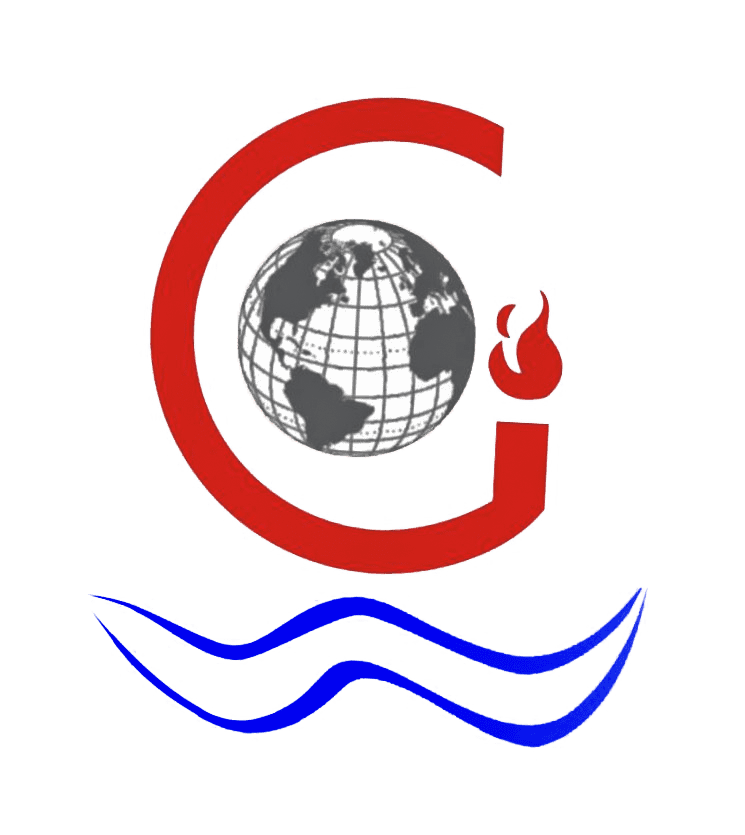
Fire hydrant systems, including essential components like the Fire Hydrant Valve and Pillar Fire Hydrant, play a critical role in fire safety. Their compliance with global standards such as EN and UL ensures optimal performance. EN standards emphasize European safety protocols, while UL certification focuses on rigorous testing and continuous monitoring to maintain high safety benchmarks. Adhering to these standards enhances the reliability of fire hydrant systems, minimizes legal risks, and safeguards personnel and infrastructure. At Yuyao World Fire Fighting Equipment Factory, we prioritize delivering products like the Fire Extinguisher and other fire safety solutions that meet these stringent standards.
Key Takeaways
- Following EN and UL rules keeps fire hydrants safe and useful. It helps protect people and buildings during emergencies.
- Checking and fixing fire hydrants often is very important. This keeps them working well and lowers the chance of problems.
- Working with trusted makers like Yuyao World Fire Fighting Equipment Factory gives you top-quality fire safety tools that meet world rules.
What Are EN and UL Standards for Fire Hydrant Systems?

Overview of EN Standards
EN standards, developed by the European Committee for Standardization (CEN), establish safety and performance benchmarks for fire hydrant systems across Europe. These standards focus on ensuring that fire hydrants meet stringent requirements for durability, reliability, and operational efficiency. For example, EN 14384 specifies the design and performance criteria for pillar fire hydrants, ensuring they can withstand high water pressure and harsh environmental conditions. Compliance with EN standards guarantees that fire hydrants are suitable for use in diverse scenarios, from urban settings to industrial facilities.
Manufacturers must adhere to rigorous testing protocols to meet EN standards. These tests evaluate the hydrants’ ability to function under extreme conditions, such as freezing temperatures or high-pressure water flow. By following EN standards, fire hydrant systems provide consistent performance, reducing the risk of failure during emergencies.
Overview of UL Standards
UL standards, developed by Underwriters Laboratories, are globally recognized for their emphasis on safety and quality assurance. These standards apply to various fire safety equipment, including fire hydrants, and focus on rigorous testing to ensure reliability. UL-certified fire hydrants undergo evaluations to confirm their ability to deliver adequate water flow and pressure during firefighting operations.
Quality assurance processes for UL standards involve extensive testing under real-world conditions. For instance, manufacturers test fire hydrant valves to ensure they can withstand high pressure and extreme temperatures. This process validates the hydrants’ performance and ensures compliance with regulatory and insurance requirements. The table below highlights key performance metrics associated with UL standards:
| Metric | Description |
|---|---|
| Firefighting Preparedness | Ensures adequate water flow and pressure for effective firefighting operations. |
| Confirming Flow Rates | Validates that designed flows are met in existing systems through real-world data. |
| Regulatory Compliance | Ensures adherence to standards and insurance requirements through periodic flow testing. |
By meeting UL standards, fire hydrant systems provide a reliable solution for fire safety, minimizing risks and enhancing operational efficiency.
Key Differences Between EN and UL Standards
While both EN and UL standards aim to ensure the safety and reliability of fire hydrant systems, they differ in their focus and application. EN standards primarily cater to European markets, emphasizing environmental adaptability and compliance with regional regulations. In contrast, UL standards have a global reach, with a strong focus on rigorous testing and quality assurance.
Another key difference lies in the testing protocols. EN standards often include specific requirements for environmental conditions, such as resistance to freezing temperatures. UL standards, however, prioritize performance under extreme operational conditions, such as high-pressure water flow. These distinctions make it essential for businesses to choose fire hydrant systems that align with their specific needs and regulatory requirements.
Manufacturers like Yuyao World Fire Fighting Equipment Factory ensure compliance with both EN and UL standards, offering versatile solutions for diverse markets. Their commitment to quality and safety guarantees that their fire hydrant systems meet the highest global standards.
Why Compliance with EN/UL Standards Matters
Ensuring Safety and Reliability
Compliance with EN and UL standards ensures that fire hydrant systems meet stringent safety and performance benchmarks. These standards require rigorous testing to verify the durability and functionality of components like valves and hydrants under extreme conditions. For instance, UL standards evaluate risks such as insulation breakdown and grounding failures, which helps prevent electrical hazards. By adhering to these standards, manufacturers can deliver reliable fire hydrant systems that perform effectively during emergencies, safeguarding lives and property.
Meeting Legal and Regulatory Requirements
Adhering to EN and UL standards helps businesses meet legal and regulatory requirements, reducing liability risks. Noncompliance with these standards can lead to significant legal consequences if a product failure causes injury or damage. Compliance demonstrates a commitment to safety, which can serve as evidence in legal cases. However, industry standards are often considered the minimum requirement. Exceeding these benchmarks further mitigates risks and enhances the credibility of manufacturers like Yuyao World Fire Fighting Equipment Factory, which prioritizes quality and safety in its fire hydrant systems.
Operational and Financial Benefits
Meeting EN and UL standards offers operational and financial advantages. Products that comply with these standards gain easier access to global markets, as certifications often serve as prerequisites for regulatory approval. Additionally, compliance reduces the likelihood of costly recalls and legal disputes. Market trends indicate that urbanization and stricter fire safety regulations drive the demand for compliant fire hydrants. This demand leads to increased inspections and upgrades, positively impacting financial outcomes for businesses that invest in high-quality, certified systems.
Steps to Ensure Compliance for Fire Hydrant Systems
Testing and Certification Processes
Testing and certification processes form the foundation of compliance for fire hydrant systems. These processes verify that the systems meet the stringent requirements outlined by EN and UL standards. Manufacturers must subject their products to rigorous evaluations, including pressure tests, flow rate assessments, and material durability checks. These tests ensure that the systems can withstand extreme conditions and deliver reliable performance during emergencies.
Certification bodies, such as Underwriters Laboratories (UL) and European standardization organizations, play a critical role in this process. They conduct independent audits and issue certifications that validate the safety and reliability of fire hydrant systems. Businesses should prioritize working with certified manufacturers to ensure their systems meet global standards. This approach not only enhances safety but also simplifies regulatory approvals in various markets.
Regular Maintenance and Inspections
Regular maintenance and inspections are essential for ensuring the long-term compliance and functionality of fire hydrant systems. These activities help identify potential issues before they escalate into significant problems, reducing the risk of system failure during emergencies.
Key maintenance practices include:
- Conducting regular fire hydrant testing to verify adequate water pressure and flow for firefighting.
- Ensuring compliance with NFPA 291, which recommends maintaining a residual pressure of 20 psi for effective firefighting.
- Performing hydrant flow tests every five years to adapt to changes in system demands.
Inspections also play a vital role in maintaining compliance. Documentation and external audits provide valuable insights into the effectiveness of these inspections. The table below highlights the benefits of regular system inspections:
| Evidence Type | Description |
|---|---|
| Regulatory Compliance | Regular audits ensure adherence to safety regulations, enhancing compliance. |
| Risk Management | Inspections improve risk management by identifying potential hazards early. |
| Operational Efficiency | Audits boost efficiency across departments by streamlining processes. |
| Safety Culture | Regular inspections foster a culture of safety, reducing workplace accidents. |
By adhering to these best practices, businesses can ensure their fire hydrant systems remain compliant and operationally efficient.
Partnering with Certified Manufacturers (e.g., Yuyao World Fire Fighting Equipment Factory)
Partnering with certified manufacturers is a strategic step toward ensuring compliance with EN and UL standards. Certified manufacturers possess the expertise and resources needed to design and produce fire hydrant systems that meet global safety benchmarks.
Yuyao World Fire Fighting Equipment Factory exemplifies this commitment to quality and compliance. The company offers a wide range of fire safety solutions, including fire hydrants, that adhere to both EN and UL standards. Their products undergo rigorous testing and certification processes, ensuring reliability and durability in diverse environments.
Collaborating with such manufacturers provides businesses with several advantages:
- Access to high-quality, certified products that meet regulatory requirements.
- Reduced risk of noncompliance, which can lead to legal and financial consequences.
- Enhanced credibility and trust among stakeholders, including customers and regulatory bodies.
By choosing a trusted partner like Yuyao World Fire Fighting Equipment Factory, businesses can streamline their compliance efforts and focus on their core operations with confidence.
How to Select Compliant Fire Hydrant Systems

Key Features of Compliant Fire Hydrant Systems
Compliant fire hydrant systems exhibit specific features that ensure their reliability and adherence to global standards. These systems are designed to withstand extreme conditions, including high water pressure and fluctuating temperatures. Materials used in their construction, such as corrosion-resistant alloys, enhance durability and operational efficiency. Additionally, compliant systems integrate advanced mechanisms for precise water flow control, ensuring effective firefighting operations.
Manufacturers often incorporate features like tamper-proof designs and easy maintenance access to improve safety and usability. Systems certified under EN and UL standards undergo rigorous testing to validate these attributes. Businesses should prioritize fire hydrant systems that meet these benchmarks to ensure optimal performance during emergencies.
Evaluating Manufacturers and Suppliers
Selecting the right manufacturer or supplier is critical for ensuring compliance with EN and UL standards. Analytical methods, such as compliance testing, play a vital role in this evaluation.
- Internal Compliance Testing: Conducted during product development to verify adherence to safety and quality benchmarks.
- Externally Mandated Compliance Testing: Ensures products meet legal and regulatory requirements established by governing bodies.
- Voluntary Compliance Testing: Confirms products exceed mandatory standards, offering enhanced reliability.
| Testing Method | Description |
|---|---|
| Internal Compliance Testing | Conducted throughout product development to ensure adherence to quality and safety standards. |
| Externally Mandated Compliance Testing | Ensures products meet legal and regulatory standards set by government agencies. |
| Voluntary Compliance Testing | Additional testing to confirm products meet desired quality benchmarks beyond mandatory requirements. |
Compliance testing provides insights into product quality and regulatory adherence, helping businesses select reliable suppliers. Manufacturers like Yuyao World Fire Fighting Equipment Factory exemplify these practices, offering certified fire hydrant systems that meet stringent global standards.
Ensuring Long-Term Compliance and Maintenance
Maintaining compliance over time requires consistent upkeep and monitoring. Regular inspections and maintenance schedules help identify wear and tear, ensuring systems remain operational during emergencies. Businesses should implement practices such as periodic flow testing and pressure evaluations to verify system performance.
Partnering with manufacturers who offer post-installation support further simplifies compliance efforts. Yuyao World Fire Fighting Equipment Factory provides maintenance guidance and technical expertise, ensuring their fire hydrant systems continue to meet EN and UL standards. This proactive approach minimizes risks and enhances system reliability.
Adhering to EN and UL standards ensures fire hydrant systems meet global safety benchmarks. Compliance enhances reliability, reduces legal risks, and fosters operational efficiency.
- Preventive maintenance minimizes failures and costs.
- 80% of industries now prioritize this approach, reducing downtime and boosting productivity.
Partnering with trusted manufacturers like Yuyao World Fire Fighting Equipment Factory guarantees certified, high-quality solutions for long-term compliance.
FAQ
What is the difference between EN and UL standards for fire hydrant systems?
EN standards focus on European regulations and environmental adaptability. UL standards emphasize global safety benchmarks and rigorous performance testing under extreme conditions.
How often should fire hydrant systems undergo maintenance?
Fire hydrant systems require regular inspections and flow tests every five years. Maintenance ensures compliance, reliability, and optimal performance during emergencies.
Why choose Yuyao World Fire Fighting Equipment Factory for fire hydrant systems?
Yuyao World Fire Fighting Equipment Factory offers certified products that meet EN and UL standards. Their solutions ensure safety, reliability, and long-term compliance.
Post time: May-19-2025

